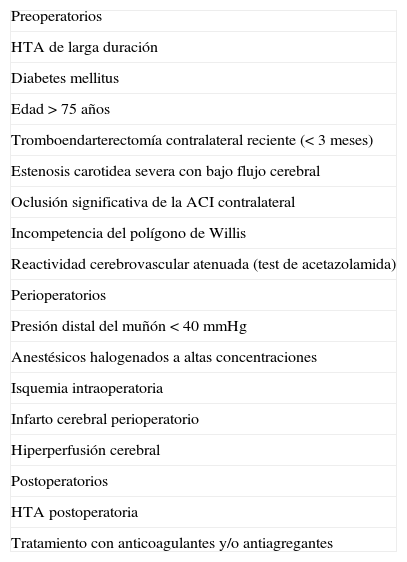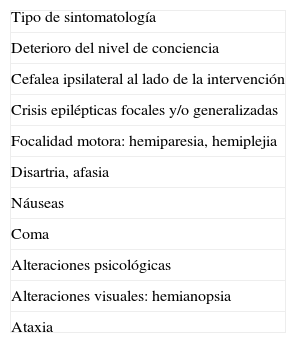El denominado síndrome de hiperperfusión cerebral, se debe fundamentalmente a un fallo de la autorregulación cerebral, incapaz de controlar la restauración del flujo tras la cirugía de revascularización. Se presenta clínicamente en forma de cefalea intensa, crisis epilépticas o focalidad neurológica. Puede progresar incluso a una hemorragia intracerebral. Aparece normalmente días después de la cirugía. Presentamos el caso de un paciente sometido a endarterectomía carotídea, que presentó una crisis epiléptica en el postoperatorio tardío. Atribuimos como causa más probable de la crisis epiléptica al síndrome de hiperperfusión cerebral. El conocimiento de este síndrome puede ayudar a orientar y tratar correctamente las complicaciones neurológicas que aparecen después de este tipo de cirugía.
The so-called cerebral hyperperfusion syndrome is basically due to a lack of cerebral autoregulation, inability to control the restoring of flow after revascularisation surgery. It present clinically as intense migraine, epileptic seizures, or neurological focality. It may even progress to an intracerebral haemorrhage. It usually appears a few days after surgery. We present the case of a patient subjected to a carotid endarterectomy, who had an epileptic episode in the late post-operative period. We attributed a cerebral hyperperfusion syndrome as the most likely cause. Knowledge of this syndrome may help to correctly orientate and treat the neurological complications that appear after this type of surgery.
Artículo
Comprando el artículo el PDF del mismo podrá ser descargado
Precio 19,34 €
Comprar ahora










